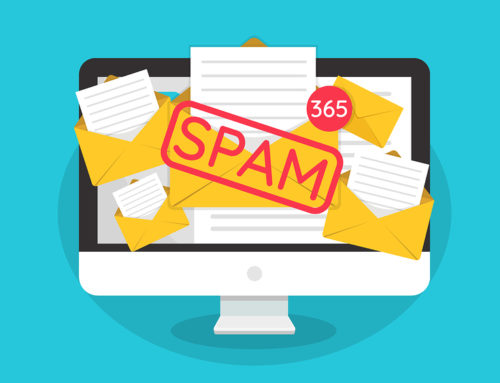
Rob Wu
Looking for some inspiration for your peer-to-peer fundraising campaign? Rob Wu, CEO of CauseVox, has some great examples and advice for you in today’s post. ~Kristina
Guest Post by Rob Wu of CauseVox
Enjoying a successful peer-to-peer fundraising campaign can take some trial and error. The best way to shortcut some of that experimentation is to look at successful campaigns and gather what worked for them. So we’ve done just that.
We chose three successful peer-to-peer campaigns and poured through their materials, updates, social media, and stories to create a list of nine tips that led to their success.
Before we dig into the tips, let’s check out those campaigns.
Health for Life by Friendship Bridge
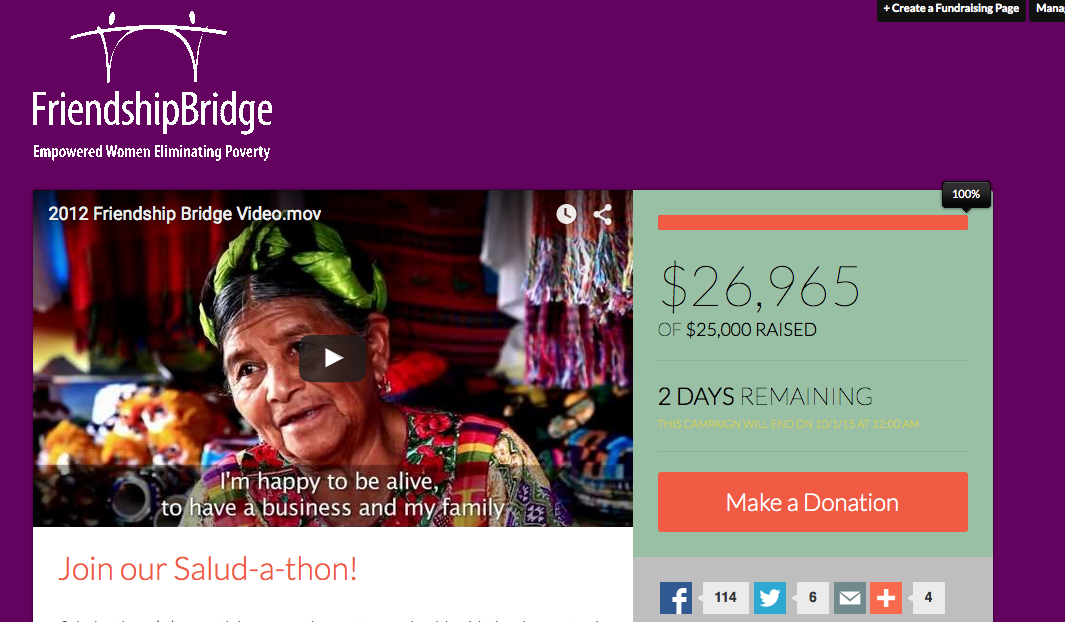
Friendship Bridge empowers impoverished Guatemalan women with microfinance and access to education. In support of this goal, they created Saluda para la vida or Health for Life, a month-long campaign urging individuals to care for their own health (by scheduling annual check ups) and for the health of Guatemalan women (by donating).
Sweat for STF by She’s the First
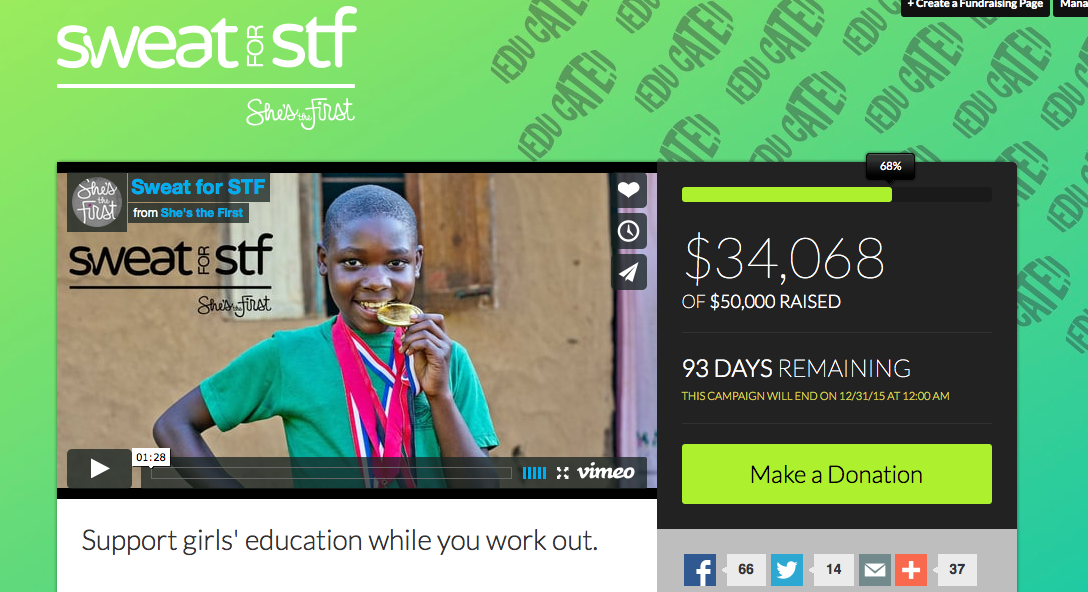
She’s the First aims to create a first generation of graduates and the next generation of leaders in low-income countries through scholarships. By the end of the year, it hopes to raise $50K for it’s #SweatforSTF campaign in which individuals pledge to complete a fitness challenge and friends and family sponsor their efforts.
Shower Strike by Well Aware
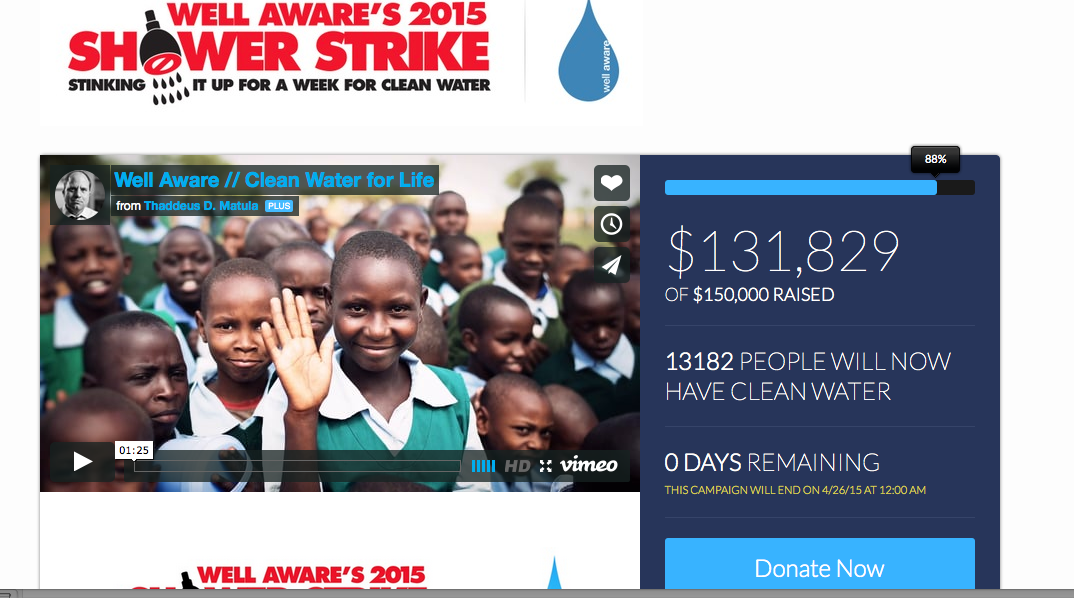
Well Aware provides innovative and sustainable solutions to water scarcity and contamination in Africa. Leading up to World Water Day in 2015, Well Aware created its Shower Strike campaign, asking participants to give up showering for a week—until it reached its campaign goal or until World Water Day, whichever came first.
Here are 9 tips you can learn from these successful peer-to-peer fundraising campaigns.
Clarity
1. Have A Clear Story, Message, And Ask
Well Aware’s story is straightforward: communities in Africa have no access to clean water. Their message is simple: we have consistent access to clean water and, sometimes, we take it for granted. The Shower Strike ask couldn’t be clearer: don’t shower, do donate. This clarity allowed supporters, like this high school volleyball team to bring Well Aware’s story to their friends and family, which they did to great success.
When creating your own campaign, see if you can replicate this kind of clarity. Even if your mission is complex or your work covers many issues, you can tell a simple story by simply focusing on one aspect or narrowing down your goal to a specific impact. Remember that peer-to-peer fundraising relies on sharing between networks. Make your story easy to share.
2. Make A Personal Connection
So you create a personal fitness goal and you set up a fundraising page. You ask friends and family to support you and you reach (or beat!) your goal. Then what?
Well then, She’s the First matches you with the girl your money helped. By creating this avenue for connection, She’s the First made this campaign personal for everyone who participated—from those who worked towards goal to those who donated.
Can’t provide your supporters with direct access to the people they are helping? There are plenty of other ways to make your cause personal, from sharing success stories from the field to providing regular updates about the progress your cause has made in a region to offering access to your staff.
Listen to your supporters and see if there is a way they’d like to make a more personal connection with you or your work.
3. Provide A Clear Outline Of How The Funds Will Be Spent
While they’ve got you thinking about your own preventative health, Friendship Bridge presents to you what your donation could buy for someone else.
$10 buys two pap smears for women in Guatemala. $75 gets the community a blood pressure cuff. And suddenly donors have an idea of how much to donate and what their money will buy.
Think about how you might quantify a donation, whether in terms of what it can provide ($75 provides clean water to a community for a day) or in terms of what the donor might consider giving up (giving up one cup of coffee a day means one kid is immunized against deadly diseases).
Providing clear connections between dollars and results creates transparency and offers some suggested donation amounts.
Materials
4. Have Multimedia Materials Kickoff Your Campaign
Written stories have long inspired people to donate to a cause. But these days, so many causes have been helped by a compelling video like the one that She’s the First uses for #SweatforSTF. The video can be shared to quickly communicate the goal of the campaign in an engaging and inspiring way.
A video does require a bit of up front work, planning, and an investment of resources so you will want to plan accordingly. Before you jump in, check out the Starter Guide to Video Storytelling.
5. Provide Toolkit Materials To Keep Your Campaign Consistent
You want as many people as possible to spread the word about your campaign. But you don’t want your message to get lost in the shuffle.
Friendship Bridge created a toolkit and series of weekly emails that it shared with anyone who started their own Salud para la Vida campaign to help reach the overall goal.
With these materials, individuals like Karen Barker were able to create their own campaigns and contribute to the overall goal.
Consider creating a toolkit for your supporters and including things like:
- Background information about you and your cause
- Suggested ways and places to promote the campaign
- Pre-written social media messages, email messages, and other campaign copy
- Assets such as logos, approved photos and other images
- A high level campaign schedule
6. Share Stories To Connect With People
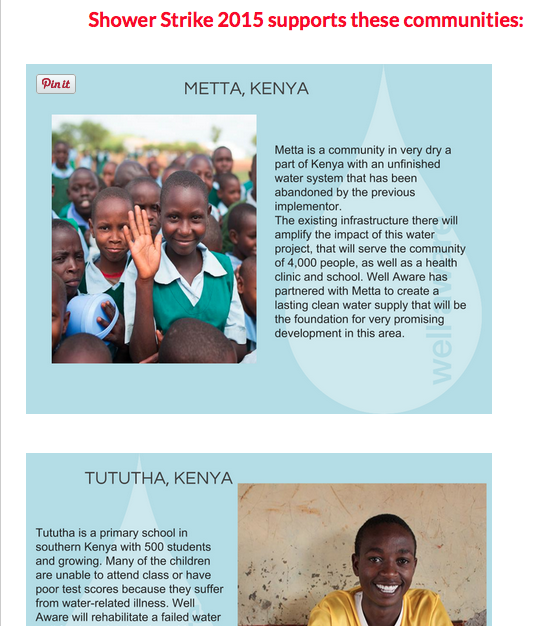
Asking people to help provide clean water to communities in Africa is a great start. But asking them to help provide clean water to three specific communities in Kenya, complete with photos, is better.
By creating a profile about the three communities that the campaign will sponsor, along with what Well Aware will do with the money in those communities, they created a more personal connection between donors and the cause.
Getting specific can be difficult, but try and be as detailed as you can when describing who your nonprofit serves. Introduce your supporters to the place on the map where their efforts are going and help them to imagine what life is like there. The more they can see and feel the problem, the more they will be inspired to help.
Updates
7. Post Blog Updates On Your Campaign Site
When you create a campaign site, you create a home base for the work on your campaign and a great place to update participants and donors alike on your progress and any related news.
Well Aware did this well, updating its community every few days leading up to and during Shower Strike 2015 with quick posts to its campaign site.
Not sure what to say? Here are a few potential blog post or update topics:
- Status of progress to your goal (even better if you can create a simple infographic)
- Success stories-Share the stories of fundraisers and volunteers who have raised significant amounts, did something unique with their campaigns, or is giving it their all
- Stories of your work in the field
- Media coverage about your campaign or your cause/issue
8. Post Frequently On Social Media
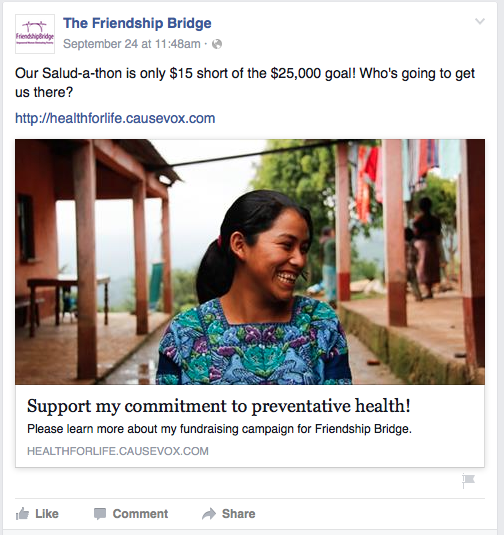
The benefit of taking your updates to social media is that they have the potential to capture new audiences that have not yet participated.
Friendship Bridge took to Facebook as it neared its deadline with updates on how much more money they needed to reach their goal. That sort of update is a great way to get your message and goal in front of the eyes of those who can help your cause, and gives the donor the credit for making the goal.
9. Share Posts And Stories From Fundraisers

By asking people to make a personal fitness pledge, She’s the First created a natural mechanism for participants to share the campaign on social media—through regular updates about their progress towards their goals.
She’s the First, of course, supported this sharing with retweets and responses, creating many little conversations about #SweatforSTF throughout social media.
It never hurts to think about what will fuel the sharing of your message early on. See if you can develop a campaign idea that lends itself to individual sharing. And when the sharing begins, don’t forget to engage!
These campaigns and tips represent just a handful of the lessons you can learn by looking out for examples of peer-to-peer fundraising done well.
What tips have you gathered from your crowdfunding success stories?
Rob Wu is the CEO of CauseVox, a peer-to-peer fundraising platform used by nonprofits to create fundraising websites (www.causevox.com). Rob has raised over $200,000 for his own social good peer-to-peer fundraiding projects, and his work has been recognized by the New York Times, CNN, Forbes, and Wall Street Journal.


